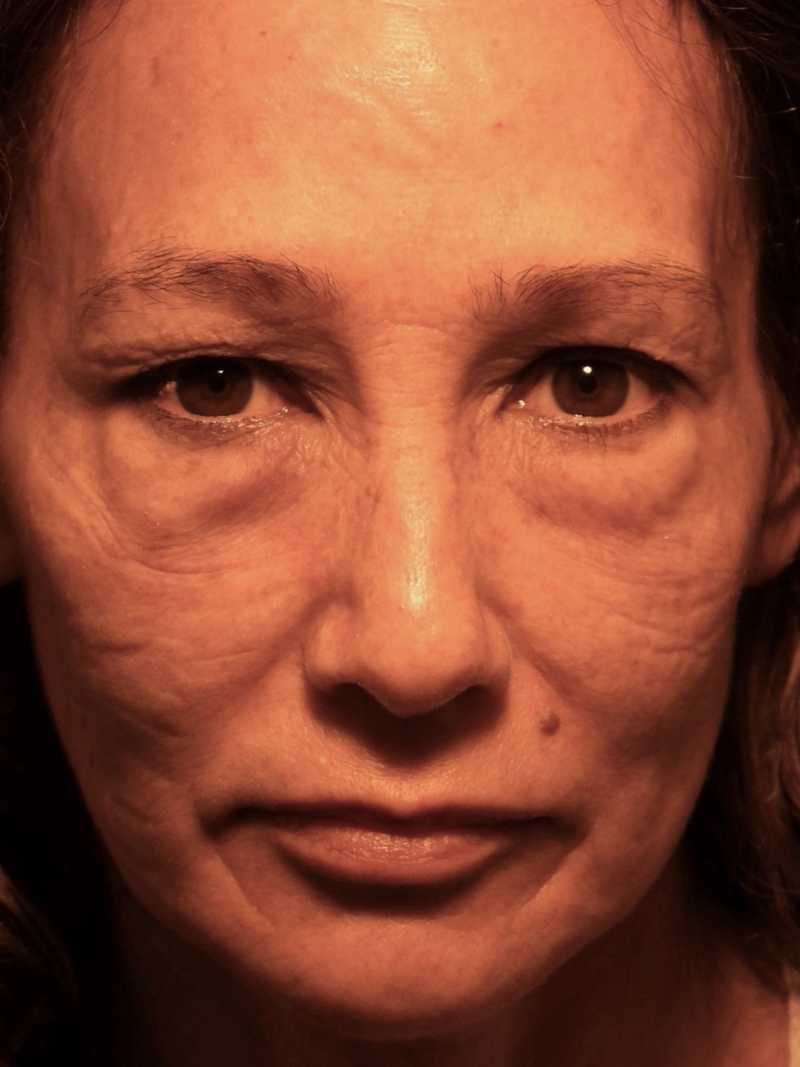While Festoons and malar mounds are often linked to aging, they’re more influenced by genetics and environmental factors. Before discussing their causes, let’s clarify the differences between festoons, malar mounds, and lower lid eye bags.

What is the difference between lower lid eye bags, malar mounds, and Festoons?
First, let’s look at lower lid eye bags, because medically speaking, they are entirely different from the other two. Lower lid eye bags are officially referred to as herniated intraorbital fat. That’s because they are the result of fat from around the eye bulging out. The best way to get rid of them is with a lower lid blepharoplasty, which removes both the fat and excess skin.
Festoons and malar mounds are much more similar to each other, with malar mounds being soft tissues that bulge outward from the top of the cheekbone, while Festoons are folds of loose skin and muscle that hang in that same area in the same hammock like shape as the architectural feature that they’re named for – a festoon is typically seen as a wreath or garland that hangs down when it’s strung between two points. The big problem with this loose skin is that it fills with fluid in an unsightly way.
What causes Festoons and malar mounds?
The number one cause of Festoons is the one thing that you can’t do anything about – your genetics. People with festoons and malar mounds often note that family members, like parents or siblings, have them too. Besides genetics, smoking, sun exposure, and thyroid hormone imbalances can also increase their likelihood.
That means that there is absolutely nothing you can do at home to fix the problem.
The only way to get rid of Festoons is surgically, and only surgical solution is RESET® for Festoons. RESET is a advanced deep resurfacing surgical procedure that repairs this difficult-to-treat condition and structurally reverses the impact of genetics, as well as the additional elements introduced by gravity, sun damage, and aging of the skin.
